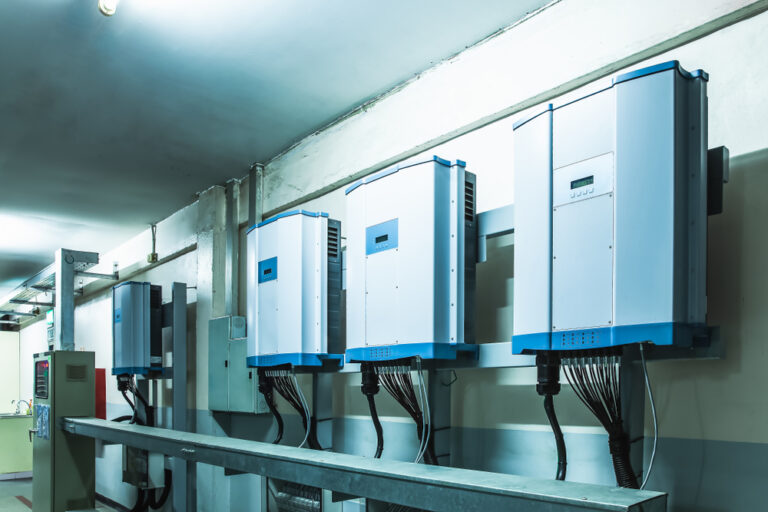Latest News
The Rise of Battery Storage: How It's Revolutionising Renewable Energy

Renewable energy has gained significant momentum in recent years as concerns about climate change have grown. Solar and wind power are among the most popular forms of renewable energy. However, one of the key challenges has been how to effectively store the energy generated from these sources. This is where battery storage has emerged as a game-changing technology. It has opened up new possibilities for a greener and more sustainable future.
Understanding Battery Storage for Renewable Energy
Battery storage for renewable energy involves the use of batteries to store excess electricity generated from renewable sources. These batteries store the energy in the form of chemical energy, which can be converted back into electricity when needed. This allows for the efficient use of renewable energy, even when the renewable source is not actively generating electricity.
One of the key advantages of battery storage is its ability to store energy for use during peak demand periods. Battery storage can also help to address the issue of intermittency, which is a common challenge with renewable energy sources. For example, solar panels only generate electricity during daylight hours. Battery storage can help to bridge these gaps and ensure a consistent and reliable supply of electricity.
Advancements in Battery Storage Technology
Over the years, there have been significant advancements in battery storage technology, making it more efficient, cost-effective, and scalable. The development of lithium-ion batteries, widely used in portable electronic devices and electric vehicles, has been one of the breakthroughs in battery storage technology.
Lithium-ion batteries possess high energy density, long cycle life, and fast charging capabilities, which make them ideal for storage. These batteries are also relatively lightweight and compact, making them suitable for both residential and commercial applications. In recent years, there has been a significant reduction in the cost of lithium-ion batteries, making them more affordable and accessible for widespread use.
Applications of Battery Storage in Renewable Energy
Battery storage has found applications in various sectors. Some of the key applications include:
Residential
Battery storage systems can be installed in homes to store excess energy generated from rooftop solar panels. This allows homeowners to use the stored energy during peak demand periods or when there is a grid outage, increasing their energy independence and reducing their reliance on fossil fuels.
Commercial
Battery storage systems are being increasingly used in commercial settings. For example, offices, factories, and commercial buildings. They are used to store excess energy generated from solar panels or wind turbines. This helps businesses manage their energy usage, reduce their electricity bills, and lower their carbon footprint.
Utility-Scale
Utility-scale projects are also utilising battery storage, where large-scale batteries store excess energy generated from solar or wind farms. These battery systems can provide backup power during periods of high demand, enhance grid stability, and enable the integration of more renewable energy into the grid.
Microgrids
Microgrids rely on battery storage as a crucial component, allowing them to operate independently or in conjunction with the main grid in localised power networks. Alongside battery storage they can store excess renewable energy and provide reliable power to communities or facilities during emergencies or when the main grid is unavailable.
Future Outlook for Battery Storage
Despite the challenges, the future outlook for battery storage is promising. The continued advancements in battery technology, coupled with increasing demand for clean and reliable energy, are driving innovation in the field of battery storage.
One of the areas of growth in battery storage is in the development of next-generation batteries. These include solid-state batteries, flow batteries, and other emerging technologies. These batteries offer potential advantages such as higher energy density, longer cycle life, and improved safety, which could further enhance the performance and sustainability of battery storage systems.
Moreover, as renewable energy becomes more widespread, there is a growing need for effective storage solutions to address the intermittency and variability of renewable energy sources. Battery storage has the potential to play a critical role in integrating renewable energy into the grid, enhancing grid stability, and supporting the transition to a more sustainable energy future.
Conclusion
In conclusion, the rise of battery storage is transforming the renewable energy sector by addressing key issues. In particular, issues with intermittency and energy storage. With its ability to store excess energy, provide backup power, enhance grid stability, and support the integration of renewable energy, battery storage is revolutionising how we generate, store, and utilise renewable energy. Battery storage will play a critical role in driving the growth and adoption of renewable energy sources. Especially, while reducing our reliance on fossil fuels and mitigating the impacts of climate change. If you are interested in battery storage, please contact our team today and we will be happy to help you get started.

